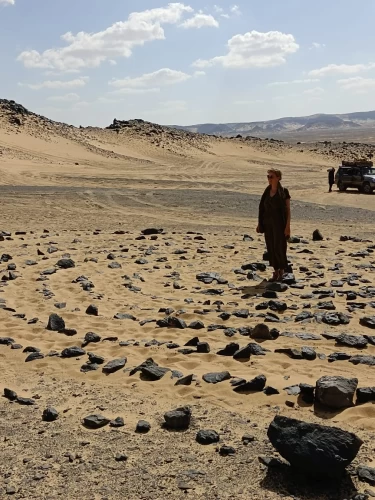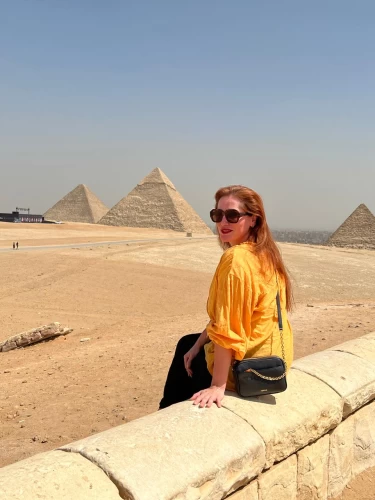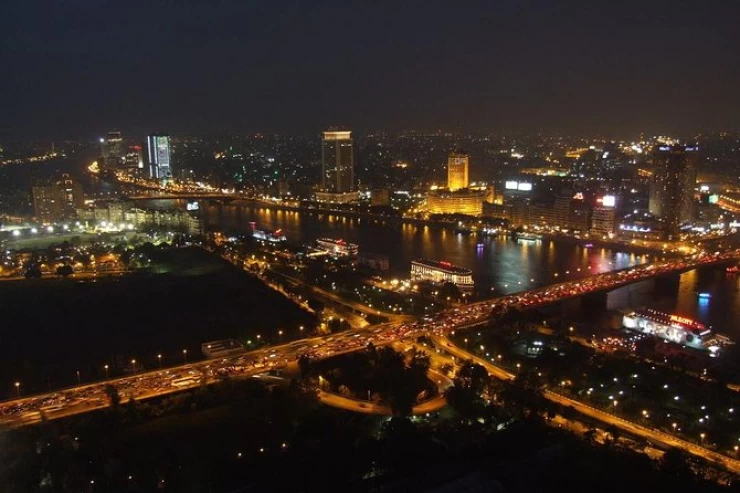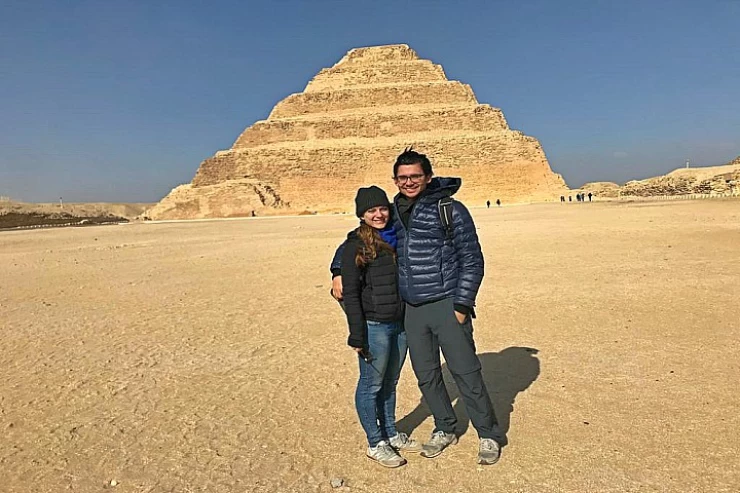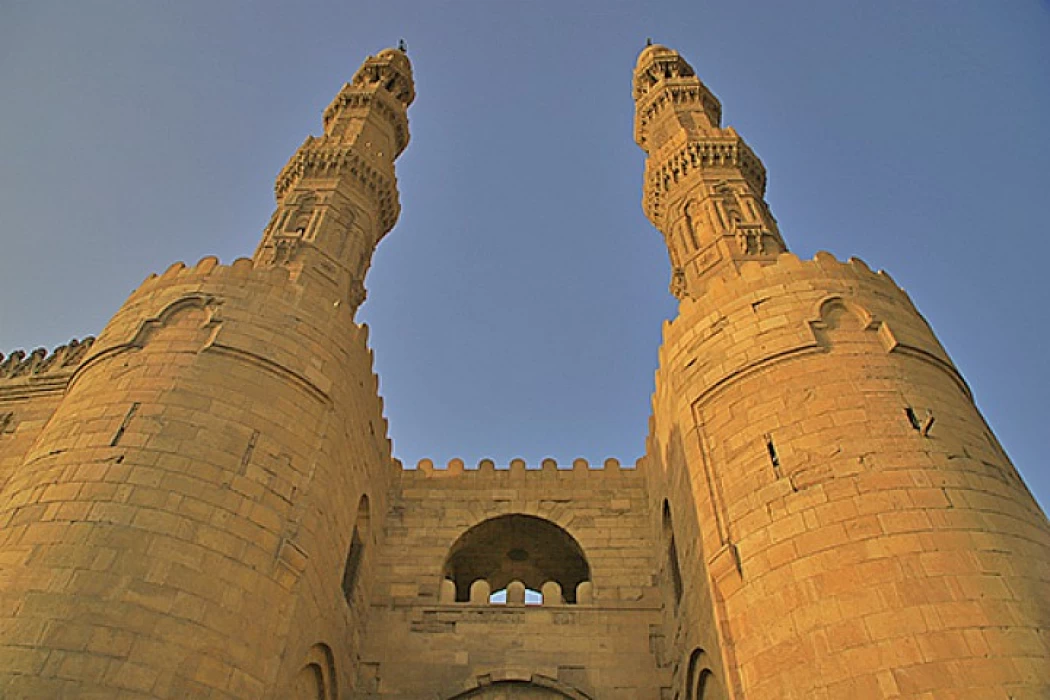
Bab Zuweila
Bab Zuweila: The Timeless Gateway to Medieval Cairo
Located in the center of Cairo, amidst the worst traffic possible, lies Bab Zuweila, one of the few medieval gates remaining in the city and a reflection of the long history of the country of Egypt as a whole. While Bab Zuweila’s famous twin towers and Islamic embellishments suggest an architectural masterpiece, it is much more than that. Bab Zuweila has seen centuries of Cairo’s history, from battles during the Middle Ages to redevelopment in contemporary times, and is still a favorite spot for history lovers as well as inquisitive tourists.
A Glimpse into History
The Southern Gate in Cairo, known as Bab Zuweila, is an ancient structure of the North African city’s walls built more than a thousand years ago during the Fatimid emperor’s reign. This was around the time when Cairo was on rapid growth, and the ambitious Fatimid caliphs wanted to fortify the city with several walls and a series of gates to ward off possible encroachers. The name of the gate, Bab Zuweila, was derived from the name of the Moroccan tribe of Zouila, who was stationed at the gate. This particular gate was built last to the city as a southern entrance of the city, and like other gates, Bab al-Futuh and Bab al-Nasr were constructed.
With time, Bab Zuweila has been evolutionarily distorted yet kept structural and functional integrity, making it a great symbol of stubbornness for Cairo and encouraging different events in history. It was here where power was exhibited by monarchs, where revolts were dealt with harshly, and where entry into the city was allowed to traders, pilgrims, and explorers. Being among the few existing gates, today it also provides some insight into changes that have taken place in Cairo and the purpose that it served then in the Islamic world.
Architectural Marvel: Design and Structure
Bab Zuweila is an architectural marvel merging military and Islamic design aspects. A unique cross-section is provided by two massive 36-meter-high minarets mounted on either side of the gate. The walls of the gate are more than 10 meters thick. And constructed of limestone with sophisticated designs, typical of the Fatimid’s dome dentils.
Upon entering the Bab Zuweila gate, one immediately notices adorning a high pointed arch, typical of Islamic architecture, the decorative finishing of the pointed arch interior. This pointed archway is an entrance to a hallway; the hallway, in turn, allows safe access to other parts of the city within the walls of the massive gate, protecting the travelers within.
The two distinctively shaped towers, begun in the 15th century and integrated into the gate today, can be viewed as the most outstanding feature of Bab Zuweila Gate. They have modified their marketing systems to endure the existing conditions of war. These were the towers from which the azan was called. These towers can be climbed by tourists today where they can view the skyline of the city, although unlike today it was possible to view the city almost at the same level during the medieval period.
The Role of Bab Zuweila in Cairo’s History
The importance of Bab Zuweila is not limited to its architectural design; it has been part of several key moments in the history of Cairo. The gate served its purpose during the Mamluk period when it was used for a public execution. It was a place where criminals and political opponents would have their severed heads fastened on the walls as a warning to the rest. It was, therefore, a place filled with terror as well as excitement.
In 1517, when the Ottoman sultan Selim I came to Cairo and hung the last Mamluk sultan Tuman Bay II on one of the arches of the gate, was one of the most well-known episodes in the history of Bab Zuweila. This event symbolized the fall of the Mamluks and the beginning of Ottoman Egypt. Today, there is a plaque placed near the gate paying tribute to the unfortunate fate of Tuman Bay, and this gives the visitors a glimpse of the violence that has been associated with the place.
Not only did Bab Zuweila serve as a place for secular activities, but it was also of spiritual importance. All pilgrims before embarking towards Mecca will enter the gate to be blessed and pray for their trip. Such sacred pathways turned out to be convenient, thus increasing the significance of the gate and making it within the primary holy sights of the city.
Bab Zuweila and the Pulse of Cairo’s Souks
Situated near the heart of Islamic Cairo, Bab Zuweila is surrounded by vibrant markets, or souks, which have thrived for centuries. The gate leads into Al-Muizz Street, one of the oldest and most historically rich streets in Cairo, lined with bustling shops, spice vendors, and artisans selling traditional wares. This area, known as the Khan el-Khalili market, has been a hub for traders and shoppers since the 14th century, offering everything from handmade jewelry to aromatic spices.
The sounds of merchants haggling, the aroma of fresh bread baking in nearby ovens, and the vibrant colors of fabrics and trinkets create an atmosphere that transports visitors back in time. Bab Zuweila stands as both a gateway and a sentinel, watching over the daily life of the souks and embodying the spirit of Cairo’s enduring commercial traditions.
Restoration and Modern Significance
The historical significance of Bab Zuweila, noting its functional and cultural aspects, led Egypt's Ministry of Antiquities to devote a great deal of effort to conservation activities. Works of reconstruction in the 2000s included activities such as stonework cleaning, minaret support strengthening, and inner passage reconstruction. Such meticulous and effective activities are directed towards ensuring that Bab Zuweila is conserved for the benefit of posterity and enabling the visitors to appreciate the rich history it possesses and its role in the history of the city of Cairo.
Today, Bab Zuweila has become one of the most visited places in Egypt, with most people coming to enjoy the rich culture of Cairo. The gate has also turned out to be a source of national pride for the citizens of Egypt, seeing as it symbolically illustrates the scale and strength of the capital.
Visiting Bab Zuweila: What to Expect
For those eager to visit Bab Zuweila, the experience offers a blend of history, culture, and breathtaking views. Visitors can enter the gate and climb the minarets, which provide an unparalleled view of Cairo’s historic district and a sweeping panorama of the surrounding neighborhoods. The climb is steep, but the reward is a bird's eye view of a city that has been shaped by countless empires, dynasties, and cultures.
At the base of Bab Zuweila, tourists can wander through the bustling markets and explore the nearby Al-Muizz Street, which features a range of other architectural gems, including mosques, madrasas, and sails (public fountains). Guided tours are available for those interested in learning more about the gate’s history and the stories embedded within its walls.
Bab Zuweila: A Timeless Legacy
Located in Egypt's vibrant capital, Bab Zuweila is one of the last gates of the existing medieval structure in Cairo and reflects the remarkable history of the city. Through its florid minarets, tipping walls, and decorations, it recounts a tale of a place that survived attacks, revolutions, and changes. As a structure that serves its purpose as a gate and a tower, Bab Zuweila links the past to the present and remains a piece of the indestructible Cairo and its memories of the past.
For those who are in love with history, Bab Zuweila provides an ideal chance to step into a section of old Cario as most dreams, while for the rest, it is a representative of the rich heritage attained. Whether fond of construct, curious about the past, or trying to sense the feel of Cairo, Bab Zuweila is always open for you, as it has been for ages.
The Al Zawiya Gate, also known as Bab Zuweila, is dated to the 11th century, more specifically around 1092 CE, when Al-Mustansir Billah, a ruler of the Fatimid Caliphate, was at the helm. It was more than just a wall and a gate, as there were additional major projects to strengthen Cairo, which was the capital of the Fatimid Caliphate at that time.
It is recorded that an Armenian Christian named Badr al-Jamali, who was a noted commander of armies and served as the vizier to Caliph Al-Mustansir Billah is credited with the design and building of Bab Zuweila and other gates of Cairo. Practices such as building several gates and walls, among them Bab Zuweila, Bab al-Futuh, and Bab al-Nasr, were instrumental in the reinforcement of the city by Badr al-Jamali. The walls and gates served not only a defensive function but also displayed the architectural and political might of the Fatimid dynasty.
The construction of Bab Zuweila by Badr al-Jamali was a demonstration of his prowess in military architecture and his commitment to the protection of Cairo. With the efforts of this eminent figure, the gate turned out to be one of the highly significant fortifications found in the city, representing the power and endurance of the Fatimid Caliphate.
Latest Articles
Admin
Seabourn Sojourn Cruise Stops in Safaga Port
The Seabourn Sojourn, the flagship vessel of Seabourn Cruise Line's ultra-luxury fleet, was built in 2008 at the T. Mariotti shipyard in Genoa, Italy. Measuring 198 metres, it can accommodate up to 450 guests in its 225 spacious all-suite staterooms.
Admin
Norwegian Sky Cruise Stops in Safaga Port
Norwegian Cruise Line operates a cruise ship called the Norwegian Sky. It was constructed in 1999 and can accommodate 2,004 passengers in addition to 878 crew members. The ship has several dining establishments, lounges and bars, a spa and fitness center, swimming pools, and a number of entertainment areas.
Admin
Explora II Cruise Stops in Safaga Port
Explora II, the second vessel in the Explora Journeys fleet, sets sail in 2024 to redefine luxury cruising. With 461 ocean-front suites, 9 culinary experiences, and 4 pools, this haven of sophistication and sustainability promises an unforgettable "Ocean State of Mind" journey to inspiring destinations.
Admin
Mein Schiff 6 Cruise Stops in Safaga Port
The Mein Schiff 6 is the latest cruise ship in the renowned TUI Cruises fleet, offering passengers a luxurious and sophisticated cruise experience. At 315 metres long, this floating resort features a range of dining options, entertainment, and recreational facilities, including a spa, fitness centre, and sports amenities.
Admin
Mein Schiff 4 Cruise Stops in Safaga Port
When the Mein Schiff 4 cruise ship docks in Safaga, Egypt, passengers are granted access to a realm of ancient wonders. Aboard this state-of-the-art vessel, guests can embark on meticulously curated shore excursions that showcase the region's most iconic landmarks, including the Giza Pyramids, the enigmatic Sphinx, and the remarkable tombs and temples of the Valley of the Kings in Luxor.
Admin
MS Europa Cruise Stops in Safaga Port
The Silver Moon, Silversea's latest flagship, is a luxury cruise ship that offers an exceptional travel experience for Venezuelans exploring Egypt. With a capacity of 596 guests and an impressive 40,700 gross tonnes, the Silver Moon maintains the small-ship intimacy and spacious all-suite accommodations that are the hallmarks of the Silversea brand.






